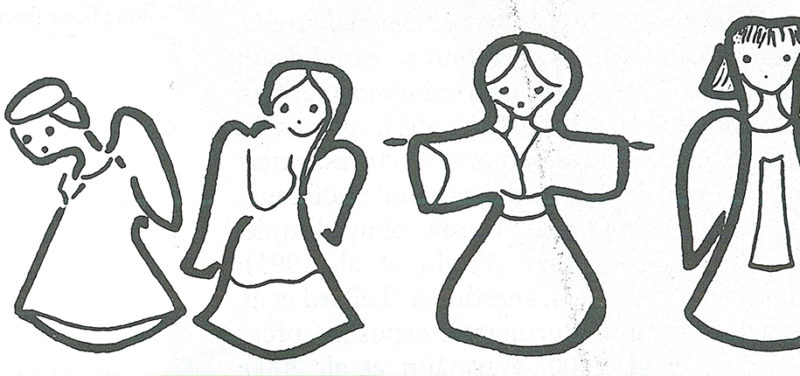
When pediatric radiologists describe the x-ray findings in our interpretation, we may use descriptive terms fancifully suggested by an abnormal appearance. Some of these “poetic” descriptive terms have been used for decades and are well known to our colleagues in radiology, while other terms have been added more recently. They help us recognize an abnormality and often lead directly to the diagnosis of a condition that may be innocent or may require further investigation.
Here are three examples from our experience here:
1. Angel-Shaped Phalanx
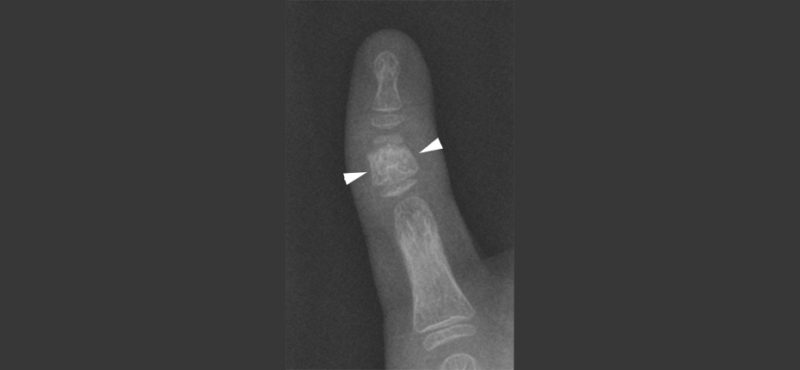
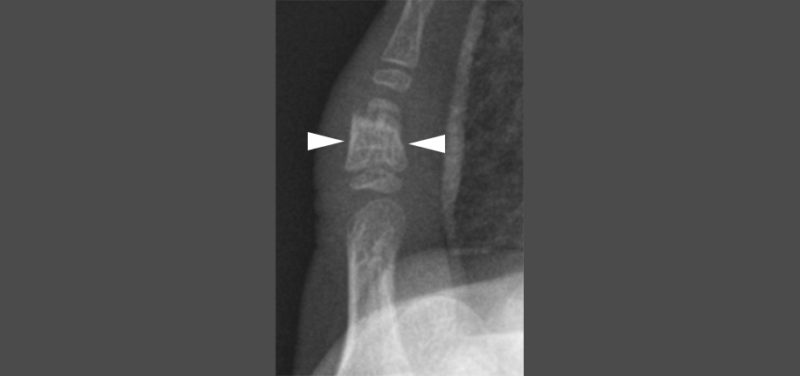
I recently encountered such a finding in a patient here at Cincinnati Children’s. This unusual shape of one of the phalanges (finger bones) of a child fancifully resembles a Christmas ornament angel. This unusual configuration was first described by the culturally adept Swiss pediatric radiologist Andres Giedion (with whom I spent most of a sabbatical year).
A specific genetic abnormality has been described in patients with this pattern. The formal name of the condition is Angel-Shaped PhalangoEpiphyseal Dysplasia (ASPED). It may be isolated to the middle phalanges of fingers, or may be associated with abnormalities of teeth, hair, or hips. It thus would be prudent in a child with an angel-shaped phalanx to undergo a pediatric evaluation for those possible associated findings.
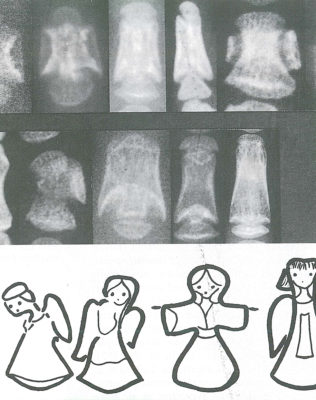
Note the angel shape (arrowheads pointing to wings) in our example.
2. Snoopy sign
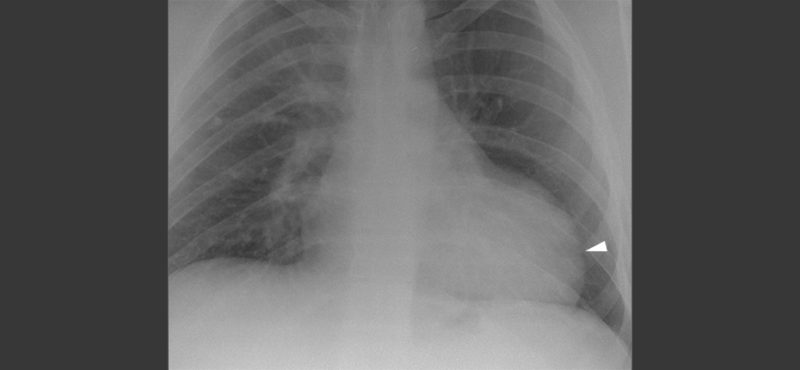
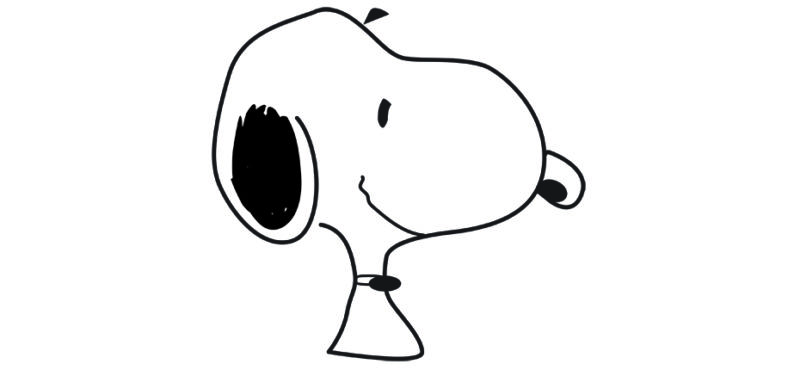
The heart on the frontal view of a chest x-ray may have different shapes with certain conditions affecting the heart and its covering (the pericardium). Various descriptive terms are used to explain the abnormal shape, such as ‘boot shaped.’ One characteristic shape has been named the “Snoopy sign,” as it resembles Snoopy from Peanuts cartoons. As shown in our example, the shape resembles the head of Snoopy in profile. Also note that the left margin of the heart (arrowhead) is more sharply defined than the right. The abnormality that causes this Snoopy sign is partial absence of the left pericardium, which was the diagnosis in the case being shown.
3. Ice-cream scoop on end sign 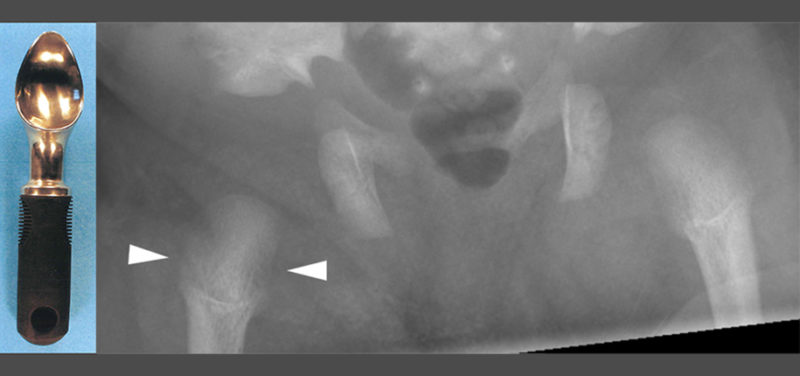
One of the most common genetic causes of shortness of stature is achondroplasia. People with this condition are short and have short limbs. There are many abnormalities of bone shape that allow radiologists to diagnose this condition in children. We have noted that in infancy, the upper end of the femur bones (the large bone just below the hips) has the shape of an ice-cream scoop on the end (as illustrated) and as shown in our example, notated by arrowheads. The only other reason for an infant to show this ice-cream scoop on end shape is if the child’s leg is not lying flat for the x-ray, but the leg is bent forward at the hip.
As you can see, radiologists often use fanciful poetic terms of description to help us recognize what is going on in our patients.
Contributed by Dr. Alan Oestreich and edited by Janet Adams, (ADV TECH_ULT).
